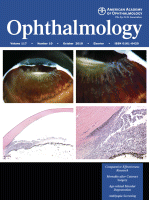Lo studio, effettuato presso il centro universitario di Melbourne, Australia, conferma ulteriormente il legame tra i processi infiamnmatori e la genesi della maculopatia senile.
In particolare, il riscontro di alterazioni di due particolari marker di infiammazione, la proteina C reattiva e il fattore H del complemento, costituisce un significativo indice di progressione della malattia. I ricercatori hanno confrontato i valori di questi due indici con la presenza di alterazioni genetiche predisponenti e concludono che questi indici di flogosi interagiscono in maniera sinergica con gli aspetti genetici che determinano l’insorgenza e la gravità della malattia.
E’ sempre più chiaro che la maculopatia senile degenerativa ha una base di predisposizione genetica sulla quale agiscono diversi fattori legati all’ambiente e allo stile di vita i quali stimolano gli stessi mediatori chimici delle risposte infiammatorie (in particolare i fattori del complemento) per “attivare” la predisposizione genetica.
Robman L, Baird PN, Dimitrov PN, Richardson AJ, Guymer RH.
Ophthalmology
October 2010, Volume 117, Issue 10, Pages 1982–1988
Purpose To determine the effect of elevated level of C-reactive protein (CRP) and its joint effect with the complement factor H (CFH) polymorphism on prevalent age-related macular degeneration (AMD) and its progression.
Design Two-arm case-control study: (a) Study on prevalent AMD cases and population-based controls; (b) longitudinal study on AMD progression, comparing those in whom AMD progressed with those with no progression.
Participants (a) A cross-sectional sample of 544 participants, of whom 312 had features of early or late AMD and 232 were controls; (b) a sample of 254 early AMD cases, followed for 7 years.
Methods The study was conducted in Melbourne, Australia. Macular stereo photographs were graded for AMD according to the International Classification and Grading System. High-sensitivity CRP was measured in fresh serum, and genotyping was performed through the Australian Genome Research Facility. The association of CRP with outcomes was tested using multivariate logistic regression analysis adjusted for age, smoking, anti-inflammatory medications, and the CC genotype of the CFH gene. Risk factor interaction was explored using an additive model.
Main Outcome Measures Prevalent early AMD, prevalent late AMD, progressed AMD, and measures of risk factor interaction.
Results Elevated CRP levels were associated with late AMD: odds ratio (OR), 3.12; 95% confidence interval (CI), 1.38–7.07. An association of elevated CRP with AMD progression was weaker: OR, 1.90 (95% CI, 0.88–4.10). A combination of elevated CRP and the CC (Y402H) genotype resulted in a super-additivity of the risks, with odds ratios of 19.3 (95% CI, 2.8–134) for late AMD, and 6.8 (95% CI, 1.2–38.8) for AMD progression, with the attributable proportion of risk owing to CRP–CFH interaction calculated at 26% for prevalent late AMD and 22% for AMD progression.
Conclusions Synergistic influence of CRP levels and the at risk genotype of the CFH gene resulted in a super-additive risk for prevalent late AMD and AMD progression. Testing for the combination of these 2 risk factors to predict a high risk of AMD and its progression would allow for targeted trials of new intervention strategies.
Financial Disclosure(s) The authors have no proprietary or commercial interest in any of the materials discussed in this article.

